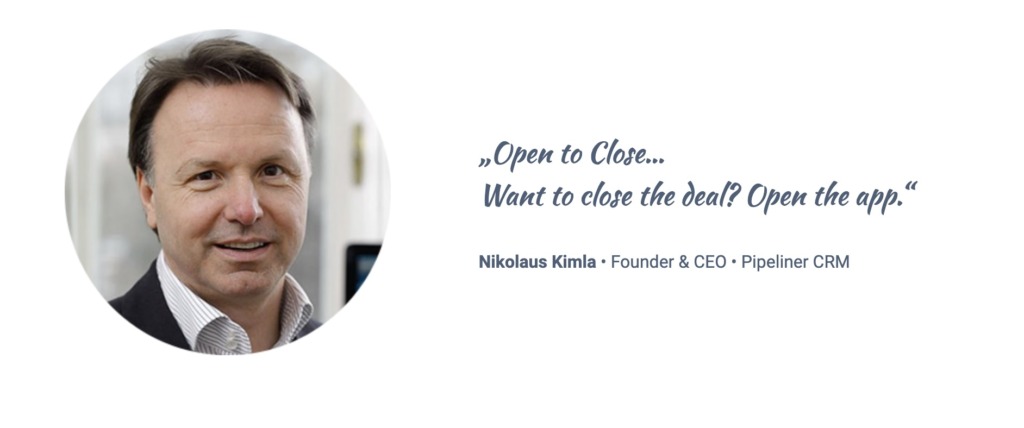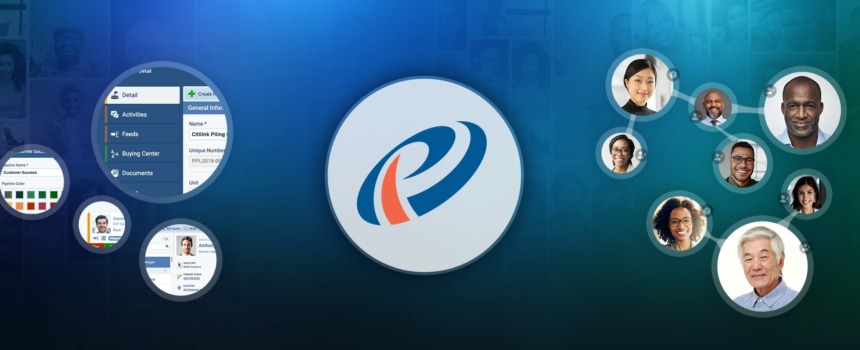At Pipeliner, we have just devised a new tagline for our CRM and our company: Open to Close. Why have we created this tagline, and what are its meanings?
The Pipeliner Difference
This tagline has been created to encompass the impact Pipeliner CRM has on an individual, the organization, and the marketplace environment as a whole.
Pipeliner as a company maintains the perspective that improved trade is good for our society, leading to a more peaceful, independent world. So far, however, sales tools have been distinctly lacking in understanding how to relate to people in an engaging and engrossing way. This lack has caused friction, resulting in unnecessary costs, decreased efficiency, and impeding the flow of free trade.
Pipeliner CRM itself is a communication tool that stands out from the stagnant competition. Pipeliner is people-focused, helping foster a strong sense of personal satisfaction through ease of use. The product is nimble and flexible, adaptable to the individual and the organization. Because Pipeliner is different, it effectively causes the market to think differently about sales.
Comparison to Others
Simply looking over the taglines of our competitors, one can readily see how Pipeliner and its new tagline are radically different. Taglines claim other products to be “#1,” “The Best,” or “Teams Love.”
None of these, however, conceptually take in a deeper understanding of everything occurring within a sales organization. This is true not only of the taglines but also of the products themselves. The reason is that other companies have not truly analyzed the real issues for sales teams and sales managers.
Pipeliner Focus
Pipeliner CRM is developed for sales managers and salespeople in teams of 20 or more, that engage in a B2B consultative sales process. These types of organizations have specific needs and wants on which we focus. Our product is not for industries such as real estate, health care systems, government or transactional sales where typically sales activities do not occur through a consultative process.
Limiting our focus to the correct type of client means we do not attract leads that are not a good fit for us and where we are not a good fit for the prospects.
Efficiency is the first impact Pipeliner CRM has. When an individual or a team becomes efficient, they become productive because they can accomplish more with fewer resources. Productivity, then, leads to profitability.
Many Meanings
With our new tagline, Open to Close, we have nurtured a deeper understanding of our focus, for this tagline has multiple meanings.
Pipeliner encompasses a company’s sales process. A sales process begins with something (“open”), and then leads to a close. It is not instant or transactional. “Close” means to end something. This can refer to the end of a sales cycle, or the end of the day when the user closes the app. As a whole, this phrase describes both the user experience and the sales process. More broadly, it also means opening one’s mind to new ways of operating and closing business more quickly.

Application to Our Company
When Pipeliner entered its “open” phase, we started small. Our focus was on the development of the product as opposed to the rapid growth of the company, so we wanted to grow the product first for the kind of client companies that we wanted to serve. The type of complex and detailed development that we undertook cannot be accomplished in a short time.
Other companies have not operated that way, some even attempting to bring to market a “fully fledged” CRM product almost overnight. How many systems are out there? SelectHub, at this time, lists roughly 1,700 systems in their CRM category, and the majority of these are only usable by smaller companies with less complicated sales situations. Why has this happened? Because, in the SaaS industry, investors typically push hard for rapid revenue growth numbers to support their investment goals. As such many products coming to market are superficial at best.
Programming the type of functionality we were aiming for takes years, and focus. As a result, growth is steady unlike the many shooting stars we see where the vast majority of investment capital has been directed into sales and marketing to drive hyper-growth. Hyper-topline growth that belies the bottom lines loses and brings crushing debt to the balance sheet. This is why many of these products then plateau and ultimately start to backslide because the lack of investment in development means they can’t deliver on the needs of bigger customers or indeed on their own marketing promises.. The Pipeliner approach is similar to becoming a violinist, concert pianist, or top athlete. Excellent performance comes about gradually. So that we could build our business, we initially sold the first version of our product, with less functionality, to companies with fewer users, from 2 to 10. This allowed us to continue to invest in the product.
Building a high-end CRM for big companies is similar to producing a vaccine, which can take up to 15 or even 20 years. In this industry, many don’t want to invest the money for such a long runway, in which we created our product incrementally. We decided to be patient and take the time to build our product the way we knew it should be. The “magic sauce” for us was to be able to attract the customers we had in the beginning years and, as we progressed, we were fortunate to add bigger opportunities and more customers, and with them we grew further and arrived where we are today.
This strategy was, in my opinion, quite profound when looking back on it. No one in this industry was willing to pay for 15 years of development. A highly complex system such as Salesforce did not, in the beginning, have its complexity. Their customers grew with them, and ultimately there was a demand for that product. 15 or 20 years ago, no product had that kind of complexity. But because Salesforce evolved (and purchased) so many features, other systems had to develop them, too, in order to compete. For quite a number of years, Salesforce and Microsoft Dynamics were the only real competitors in the market because no one had the development power to keep up with them. They also never ceased development.
If we had not taken the strategy that we did, we would not be where we are today, able to realistically compete with—and in many cases overtake—these giants. Now, we have genuinely made it from “Open to Close!”






















Comments